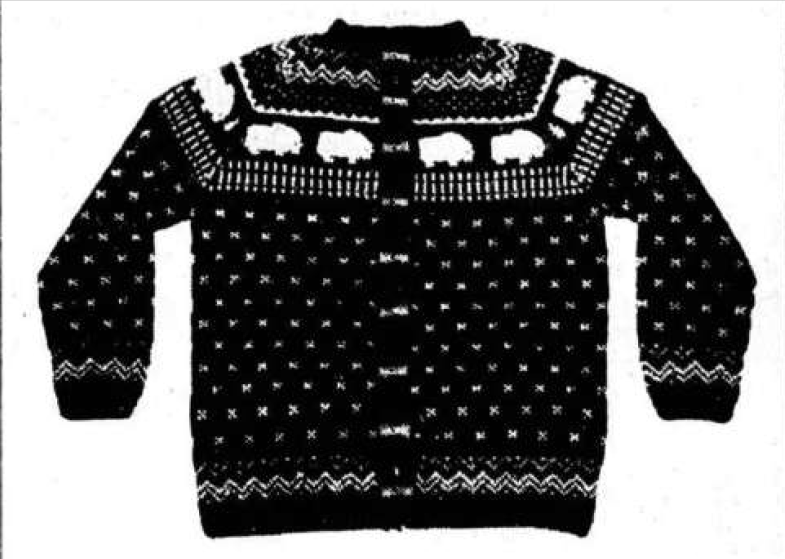
The perfect Christmas gift?
It’s Christmas and all the presents have been opened to the great delight of children everywhere. Fantastic gifts for the adults are often much harder to come by than those for kids. But in an article from 12 December 1970, I saw a gift that might just turn heads: an original Norwegian muskox pattern sweater (Moskus-kofte).

The sweater, which was designed by Mrs. Bergljot Henningsen, was going to be produced by Norsk Moskus A/S who had imported 25 muskox calves to Bardu, Norway, in 1969 as domestic stock. Because muskox wool (qiviut) cost 700 kr per kilo and took one month to handspin, only the muskoxen themselves would be knitted of qiviut; the rest would be regular sheep wool. When the article came out in December 1970, it was unknown when the sweaters would actually go into production. In October 1971, the company told the local paper Lofotposten that it was looking for local people to knit the sweaters.
A proposal to bring muskox to the county of Troms as a domestic wool producer was first raised in 1967 by the parliamentary representative Alfred Henningsen. He arranged for exchange visits with the muskox farm in Alaska run by Dr. John Teal of the University of Alaska Fairbanks to build support for the project. He wanted the Norwegian State to financially support the idea and import the animals, but the State declined (record of his request to Stortinget and the reply is now available online). In spite of this lack of direct support, Henningsen helped found the company Norsk Moskus A/S who then imported 25 calves. Henningsen was clear that he was not talking about domesticating the wild muskoxen already on Svalbard and in the Dovre mountains, but rather newly imported young animals.
Bardu had previously had a wild muskox herd. A group of muskox had been released in 1948 in Bardu and lived in the northern Norway-Sweden border area. They were seen on the Norwegian side of the border in February 1953, but no live calves were in the herd, so there was concern about the herd’s long-term survival. In 1962, the local Harstad Tidende paper reported that the remaining muskoxen in the area would be killed because of conflicts with farmers, but the animals had not been seen that year in spite of flyovers to find them. The wild herd in Bardu seemingly died out.
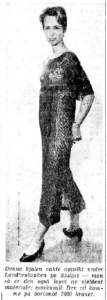
The domestic muskox of Bardu had greater promise. Norsk Moskus A/S tried to build up hype about muskox wool products for the luxury market. In February 1970, the company showed a muskox wool dress at a big agricultural fair. The dress was “as light as a snowflake and warm” but “amazingly expensive”. The luxury dress would be expected to fetch a price of over a thousand US dollars (7000 kr). The first handmade muskox wool products from Norsk Moskus — three shawls — were sent to the arts and crafts store Husfliden in Bergen for sale in March 1971.
Unfortunately, while I’ve seen muskox wool items for sale, I’ve never seen the muskox pattern sweater. Maybe it’s something to ask my Norwegian mother-in-law to knit for me for next Christmas.
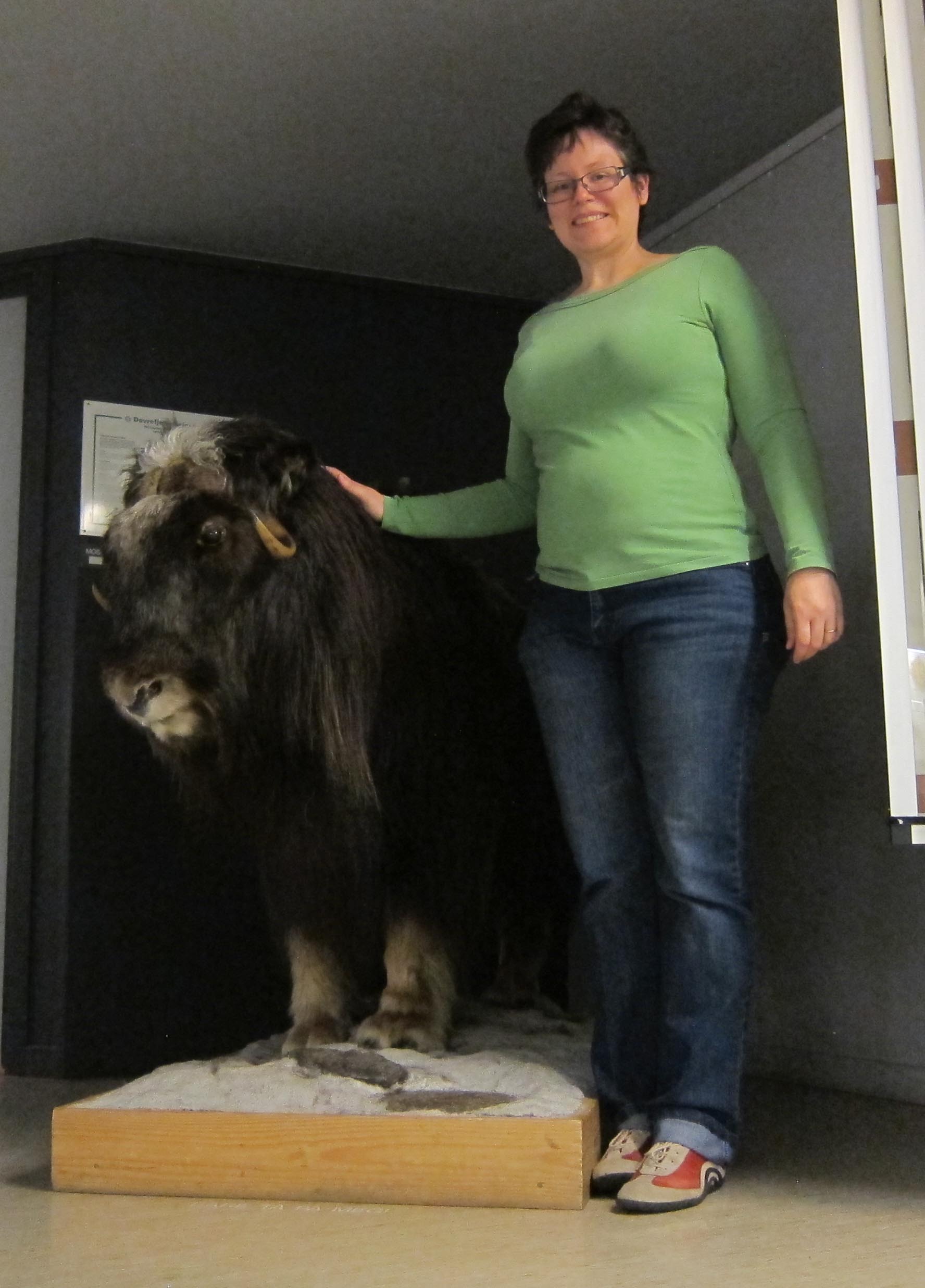
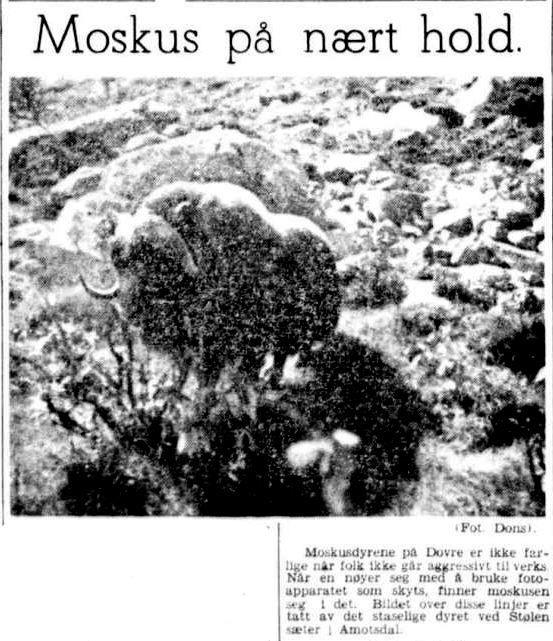

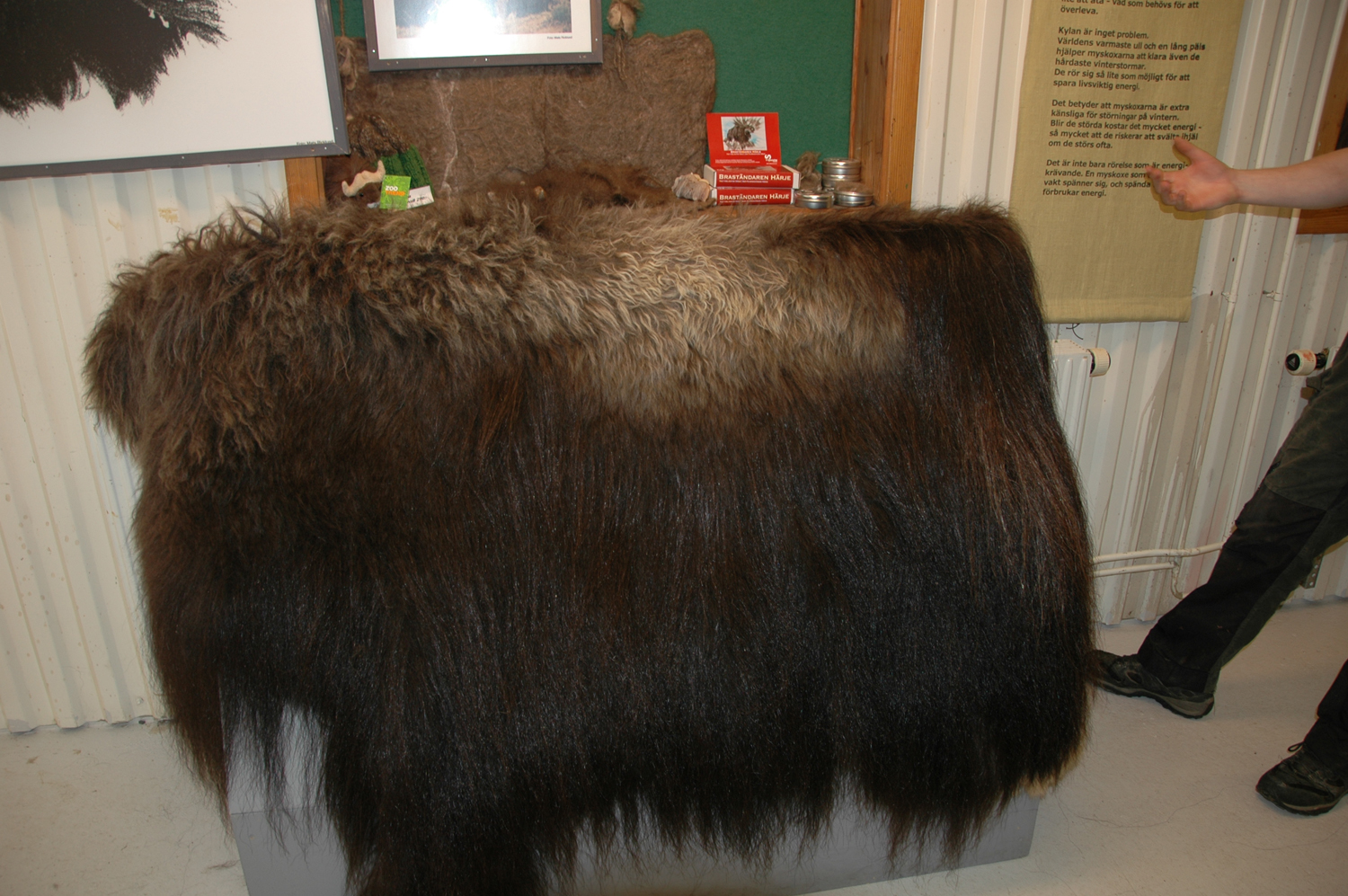
One Comment
Pingback: